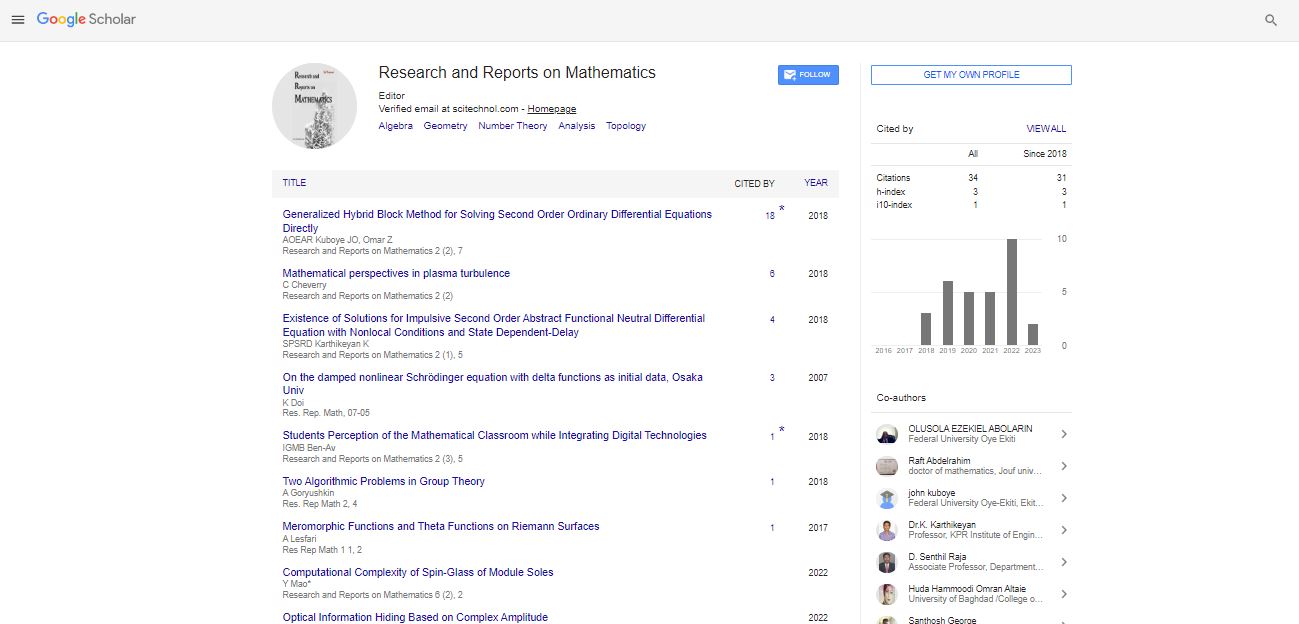none, Res Rep Math Vol: 5 Issue: 11
Weierstrass Portrayal for Timelike Surfaces in Minkowski 4-Space
Norman L. Johnson*
University of Iowa, 750 E. Foster Rd. 306, Iowa City, IA, 52245, USA
*Corresponding Author:
Norman L. Johnson
University of Iowa, 750 E. Foster Rd. 306, Iowa City, IA, 52245, USA
E-mail: normjohnson0@icloud.com
Received Date: November 03, 2021; Accepted Date: November 17, 2021; Published Date: November 24, 2021
Citation: Johnson NL (2021) Weierstrass Portrayal for Timelike Surfaces in Minkowski 4-Space. Res Rep Math 5:11. 134.
Copyright: © All articles published in Research and Reports on Mathematics are the property of SciTechnol, and is protected by copyright laws. Copyright © 2021, SciTechnol, All Rights Reserved
Keywords: self-symmetrical, Hermitian structures
Editorial Note
We demonstrate that in the event that n>k2, a k-layered straight code of length n over Fq2 has a truncation which is directly identical to a Hermitian self-symmetrical direct code. In the opposite case we demonstrate that truncations of straight codes to codes comparable to Hermitian self-symmetrical direct codes happen when the sections of a generator network of the code don’t force free circumstances on the space of Hermitian structures. For the situation that there are more than n normal zeros to the arrangement of Hermitian structures which are zero on the segments of a generator grid of the code, zeros extra give the expansion of the code to a code that has a truncation which is identical to a Hermitian self-symmetrical code.
An absent point on an interpretation surface is a point with no closed geodesic going through it. Nguyen et al. showed that there are all things considered limitedly numerous unaware focuses on some random interpretation surface and built a group of surfaces with precisely one careless point. We develop new groups of interpretation surfaces with for arbitrary reasons numerous absent focuses and demonstrate that there is an interpretation surface in each genus ≥3 with a oblivious point.
There is a notable algebraic process by which spreads and quasifibrations with their delegate incomplete spreads are inside PG(3, K), where K is a field that concedes a quadratic field expansion might be “lifted” to a comparing spread or quasifibration, individually. The lifted quasifibrations are logical maximal incomplete spreads inside PG(3,K(τ)), where K(τ), indicates the related quadratic field expansion of K. In this article, we find out if there is any kind of “lifting” process for spreads composed over non-commutative skewfields. We consider where the lifting hypothesis could reach out to quasifibrations that live in PG(3, K), where K is viewed as a non-commutative skewfield. We can show that any non-commutative skewfield that concedes a focal Galois quadratic expansion skewfield consistently might be lifted to a new semifield. This happens, specifically, in most quaternion skewfield planes and since there is a framework portrayal of a quaternion skewfield inside GL(3, K), for specific fields K, there are then two commonly non-isomorphic skewfield planes built in commonly non-isomorphic 3-dimensional projective spaces. Taken absolutely logarithmically, this lifting development like may be known as a Cayley-Dickson system, as the built semifields, albeit not algebras, are the resultant while applying this method to a focal Galois quadratic expansion quaternion division ring, accordingly losing associativity.
In this paper we sum up the Weierstrass representation equation for insignificant timelike surfaces in Minkowski 3-space, that was found by S. Lee, for similar surfaces in Minkowski 4-space. We additionally sum up the representation equation found by M. A. Magid for ordinary timelike surfaces. As an exceptional case we get one more representation equation for negligible timelike surfaces.
The Ribaucour change is a speculation of equal surfaces and Darboux changes. It has been contemplated by numerous analysts. In this paper, first we present the development of Ribaucour changes through Cauchy-Kovalevskaya hypothesis, including an unequivocal necessary recipe of Ribaucour changes for surfaces of transformation. In the last 50% of this paper, we additionally concentrate on the singularities showing up on Ribaucour changes and give the models for cuspidal edges, swallowtails, cuspidal cross covers, D±4-singularities.
 Spanish
Spanish  Chinese
Chinese  Russian
Russian  German
German  French
French  Japanese
Japanese  Portuguese
Portuguese  Hindi
Hindi 